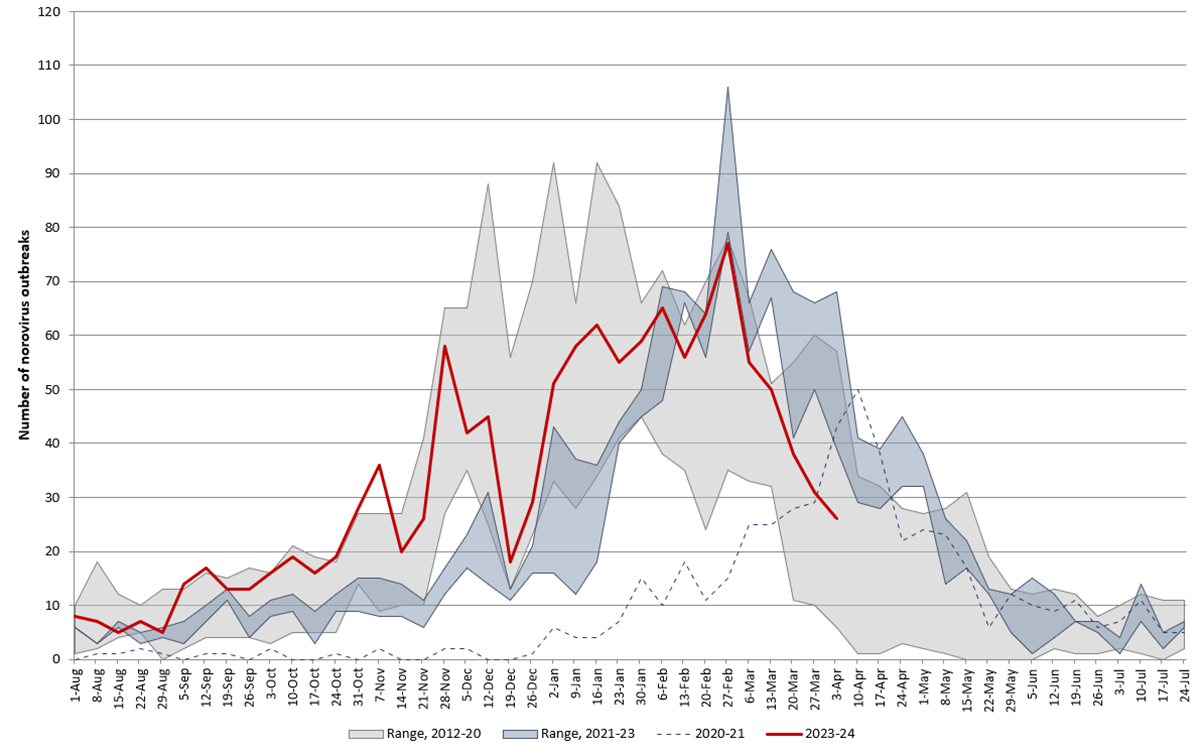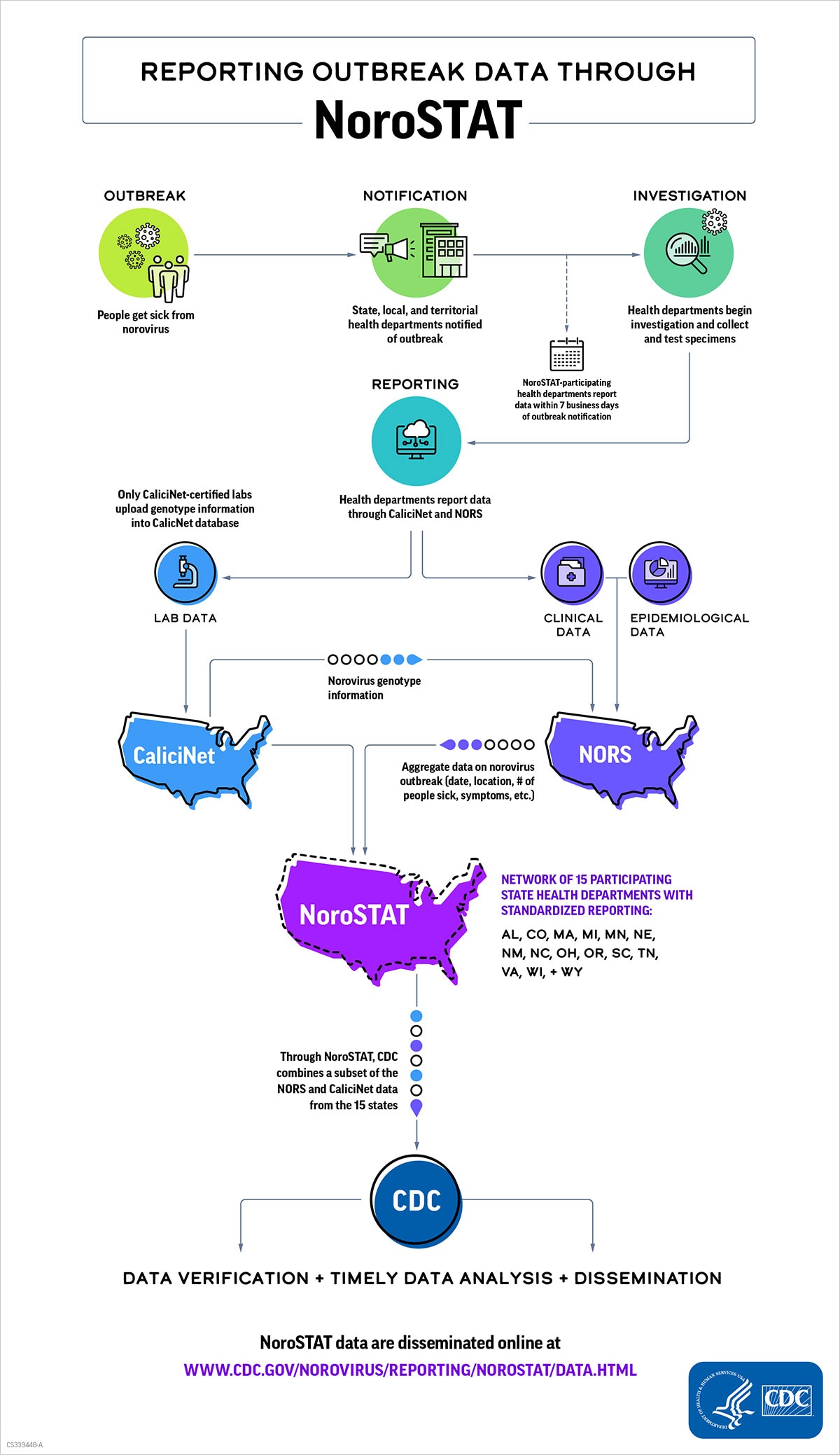Reporting and Surveillance for Norovirus: NoroSTAT
About NoroSTAT
CDC established the Norovirus Sentinel Testing and Tracking (NoroSTAT) network in August 2012. NoroSTAT is a collaborative network of fifteen state health departments and CDC working together to establish and maintain standard practices for norovirus outbreak reporting to CDC surveillance systems. These standards aim to improve the timeliness, completeness, and consistency of norovirus outbreak reporting. State health departments that participate in NoroSTAT promptly report specific epidemiologic and laboratory data on suspected or confirmed norovirus outbreaks to CDC. This information is used to quickly evaluate current norovirus outbreak activity, make comparisons to previous years, and assess strain-specific characteristics of norovirus outbreaks, including the impact of new strains on outbreak frequency and severity.
Answers to questions about NoroSTAT including why it’s important and types of data collected.
NoroSTAT: Frequently Asked QuestionsEvery week, participating states report the number of suspected or confirmed norovirus outbreaks to NoroSTAT. Learn more about NoroSTAT data and get information about the current norovirus season.
Keep Reading: NoroSTAT Data
Reporting through NoroSTAT
- Read Text Equivalent (for Section 508 access).
- During an outbreak, people get sick from norovirus.
- State, local, and territorial health departments are notified of outbreak.
- NoroSTAT-participating health departments report data within 7 business days of outbreak notification.
- Health departments begin investigation and collect and test specimens.
- Health departments report data through CaliciNet and NORS.
- Lab data reported to CaliciNet and integrated into NoroSTAT.
- Only CaliciNet-certified labs upload genotype information into CaliciNet database.
- Clinical data and epidemiological data reported to NORS.
- CaliciNet data linked to NORS to provide genotype information.
- Only aggregate data on norovirus outbreak (date, location, number of people sick, symptoms, etc.) is integrated from NORS into NoroSTAT.
- NoroSTAT is a network of 15 participating state health departments with standardized reporting: AL, CO, MA, MI, MN, NE, NM, NC, OH, OR, SC, TN, VA, WI, and WY
- Through NoroSTAT, CDC combines a subset of the NORS and CaliciNet data form the 15 states.
- CDC oversees data verification, timely data analysis, and data dissemination.
- NoroSTAT data are disseminated online at https://www.cdc.gov/norovirus/reporting/norostat/data.html.

